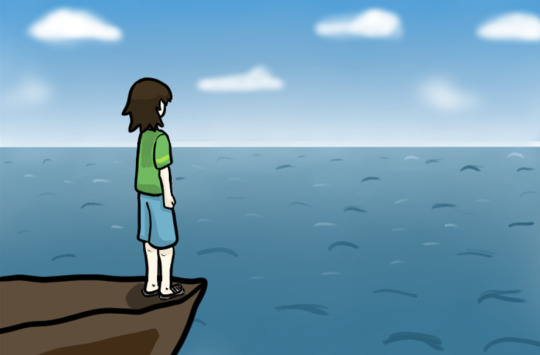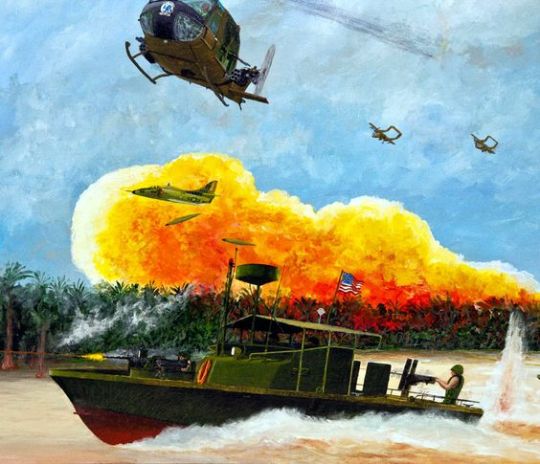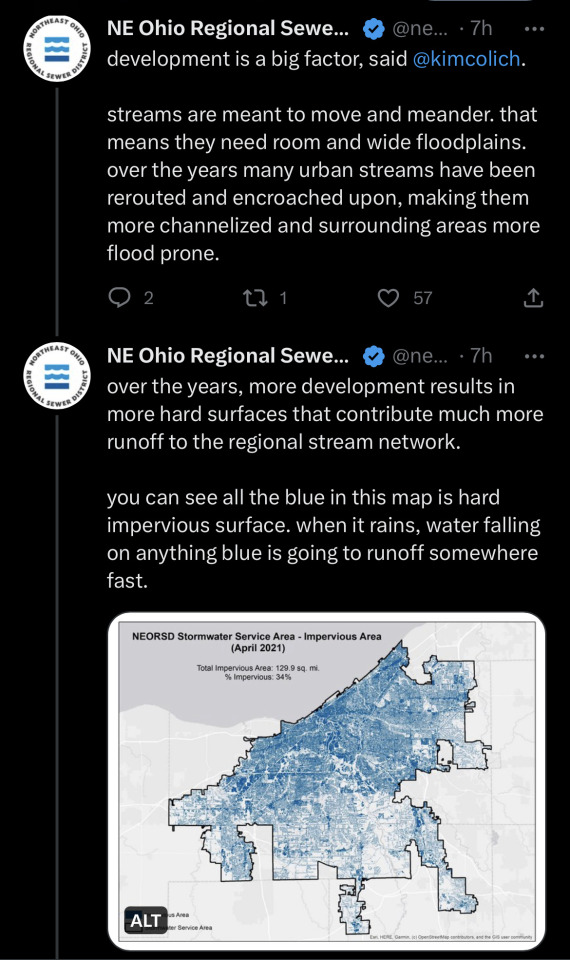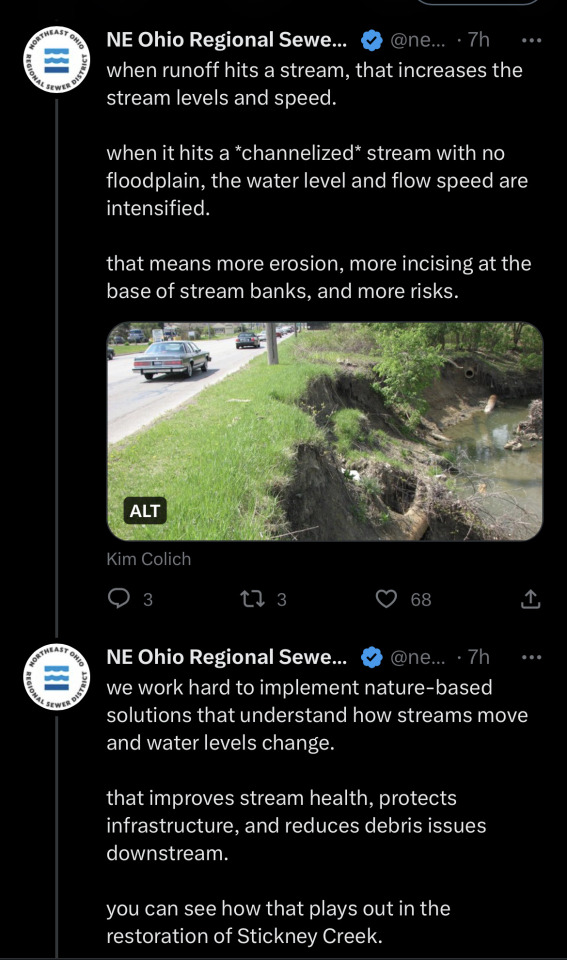#riverine
Text
The Klamath River’s salmon population has declined due to myriad factors, but the biggest culprit is believed to be a series of dams built along the river from 1918 to 1962, cutting off fish migration routes.
Now, after decades of Indigenous advocacy, four of the structures are being demolished as part of the largest dam removal project in United States history. In November, crews finished removing the first of the four dams as part of a push to restore 644 kilometres (400 miles) of fish habitat.
“Dam removal is the largest single step that we can take to restore the Klamath River ecosystem,” [Barry McCovey, a member of the Yurok Tribe and director of tribal fisheries,] told Al Jazeera. “We’re going to see benefits to the ecosystem and then, in turn, to the fishery for decades and decades to come.” ...
A ‘watershed moment’
Four years later, [after a catastrophic fish die-off in 2002,] in 2006, the licence for the hydroelectric dams expired. That created an opportunity, according to Mark Bransom, CEO of the Klamath River Renewal Corporation (KRRC), a nonprofit founded to oversee the dam removals.
Standards for protecting fisheries had increased since the initial license was issued, and the utility company responsible for the dams faced a choice. It could either upgrade the dams at an economic loss or enter into a settlement agreement that would allow it to operate the dams until they could be demolished.
“A big driver was the economics — knowing that they would have to modify these facilities to bring them up to modern environmental standards,” Bransom explained. “And the economics just didn’t pencil out.”
The utility company chose the settlement. In 2016, the KRRC was created to work with the state governments of California and Oregon to demolish the dams.
Final approval for the deal came in 2022, in what Bransom remembers as a “watershed moment”.
Regulators at the Federal Energy Regulatory Commission (FERC) voted unanimously to tear down the dams, citing the benefit to the environment as well as to Indigenous tribes...
Tears of joy
Destruction of the first dam — the smallest, known as Copco 2 — began in June, with heavy machinery like excavators tearing down its concrete walls.
[Amy Cordalis, a Yurok Tribe member, fisherwoman and lawyer for the tribe,] was present for the start of the destruction. Bransom had invited her and fellow KRRC board members to visit the bend in the Klamath River where Copco 2 was being removed. She remembers taking his hand as they walked along a gravel ridge towards the water, a vein of blue nestled amid rolling hills.
“And then, there it was,” Cordalis said. “Or there it wasn’t. The dam was gone.”
For the first time in a century, water flowed freely through that area of the river. Cordalis felt like she was seeing her homelands restored.
Tears of joy began to roll down her cheeks. “I just cried so hard because it was so beautiful.”
The experience was also “profound” for Bransom. “It really was literally a jolt of energy that flowed through us,” he said, calling the visit “perhaps one of the most touching, most moving moments in my entire life”.
Demolition on Copco 2 was completed in November, with work starting on the other three dams. The entire project is scheduled to wrap in late 2024.
[A resilient river]
But experts like McCovey say major hurdles remain to restoring the river’s historic salmon population.
Climate change is warming the water. Wildfires and flash floods are contaminating the river with debris. And tiny particles from rubber vehicle tires are washing off roadways and into waterways, where their chemicals can kill fish within hours.
McCovey, however, is optimistic that the dam demolitions will help the river become more resilient.
“Dam removal is one of the best things we can do to help the Klamath basin be ready to handle climate change,” McCovey explained. He added that the river’s uninterrupted flow will also help flush out sediment and improve water quality.
The removal project is not the solution to all the river’s woes, but McCovey believes it’s a start — a step towards rebuilding the reciprocal relationship between the waterway and the Indigenous people who rely on it.
“We do a little bit of work, and then we start to see more salmon, and then maybe we get to eat more salmon, and that starts to help our people heal a little bit,” McCovey said. “And once we start healing, then we’re in a place where we can start to help the ecosystem a little bit more.”"
-via Al Jazeera, December 4, 2023
#indigenous#river#riverine#ecosystem#ecosystem restoration#klamath#klamath river#oregon#california#yurok#fishing#fisheries#nature is healing#literally this time lol#united states#dam removal#climate change#conservation#sustainability#salmon#salmon run#water quality#good news#hope#rewilding#ecology#environment
5K notes
·
View notes
Text
Happy Trans Day of Visibility!

21 notes
·
View notes
Text

I've been thinking about this panel since I finished it. Just, wow! Cool! I did something nice looking! Awesome!
11 notes
·
View notes
Text




• World Frog Day, 2024 •
✨🍃🪷🐸🪷🍃✨
#worldfrogday#anura#amphibians#frogs#ecosystem#forest#wetland#indigenous flora#riverine#riparian#western cape#nature#nature photography#indicator species#biodiversity#no filter#nature log
8 notes
·
View notes
Photo

(via Artwork of the Vietnam War – CherriesWriter – Vietnam War website)
#USN#Riverine#Vietnam War#OV-10 Bronco#HAL-3 Seawolves#VAL-4 Black Ponies#PBR#A-4 Skyhawk#Aviation#Naval
10 notes
·
View notes
Text

The Brown water Navy of Vietnam. The most successful unit of the entire war. Recommend the book "Brown Water, Black Berets." An awesome and interesting look at the Riverine Forces in the Delta.
#vietnam war#vietnam#riverine#brown water Navy#1960s#war#military art#military history#world history#history#book recommendations
2 notes
·
View notes
Text
Beautiful simple life at a remote village in Borneo. Just like any other longhouse in this region, the settlement is by a river, because it provides them water, fishes, connecting them to other places, and transporting goods.


#village#outskirt#rural#Sarawak#Borneo#Kayan#LongBemang#Baram#canoe#river#UluBaram#longhouse#countryside#photography#kids#swimming#riverbank#riverine#remote village#Photographer on Tumblr#lifestyle#simple life#simple living
5 notes
·
View notes
Photo

The Gosthani River just a few meters before its confluence with the Bay of Bengal.
Despite the seemingly placid appearance of the surface - indeed an epitome of deceptive placidity - the water in truth had a very considerable velocity, precluding anything so foolhardy as attempting to wade, or - heaven forbid - swim across it.
One is reminded of the fact that in wilderness trekking, river and stream crossings kill more people than any other kind of natural calamity that might befall them on this terrain.
May 10, 2010. Bheemili, Andhra Pradesh.
#gosthani#river mouth#river#confluence#bay of bengal#placidity#dangerous#hidden danger#river crossing#foolhardy#foolish#velocity#water#danger#riverine#fluid mechanics#speed#drowning#risky#current#wading#swimming#lethal#andhra pradesh#Coastal Andhra#coastline#seashore#beach#bheemili
2 notes
·
View notes
Audio
2 notes
·
View notes
Text






this actually calmed me down, it really did
0 notes
Text
Destiny Lovee cums hard using two toys
Blindfold Lesbian Oil Massage Leads to Tied Up Edging, Orgasm Denial and Ruined Orgasms: KinkyBabies
SMALL DICK TO Long
Milf caught masturbating by Cory Chase in Revenge On Your Father
My hottest anal closeup
Sabrina Sabrok ass fucking and cock sucking
Some freaky shit
Asian beauty in net panties Lily Thai gets nailed on the couch
Pack de rebeka martinez
Eating her pussy then making the dude cream her pussy hole
#megadynamics#concretized#conglobulate#millenium#Brasstown#Gensan#paganizing#macromandibular#riverine#sedimetrical#pokeart#melezitose#thunder-stone#eggnog#epicenity#Pennebaker#unhubristic#chirivita#wide-brimmed#cubitopalmar
0 notes
Text
Me: man I need some inspiration. Hm. I wanna watch this scene
Brain: rhode. Rhode that's a scene from Riverine.
Me: oh
Brain: you have to make that. And you won't be making it for like 6 years.
Me:....oh
5 notes
·
View notes
Text
Hey, I'm making a webcomic. It's called Riverine, about a trans girl who gets superpowers. It's something that's been bouncing around in my head for a couple years now and I'm really excited to be finally making it.
I'm hoping to update it twice a week from here on out. I'd love if you give a shot!
#transgender#trans#trans girl#webcomic#webtoon#riverine#riverine comic#superhero oc#superhero comic#trans hero
11 notes
·
View notes
Text

October.
Walter Sisulu National Botanical Garden, 2022.
Johannesburg, Gauteng, SA 🌾
#waterfall#river#riparian#nature#botanical garden#trees#foliage#sunshine#bridge#flora#photography#gauteng#lovely#view#stream#spring#mountain#riverine#johannesburg#nature log
5 notes
·
View notes
Photo

(via Inspirational Stuff: Mort Künstler and Shark Week -)
10 notes
·
View notes